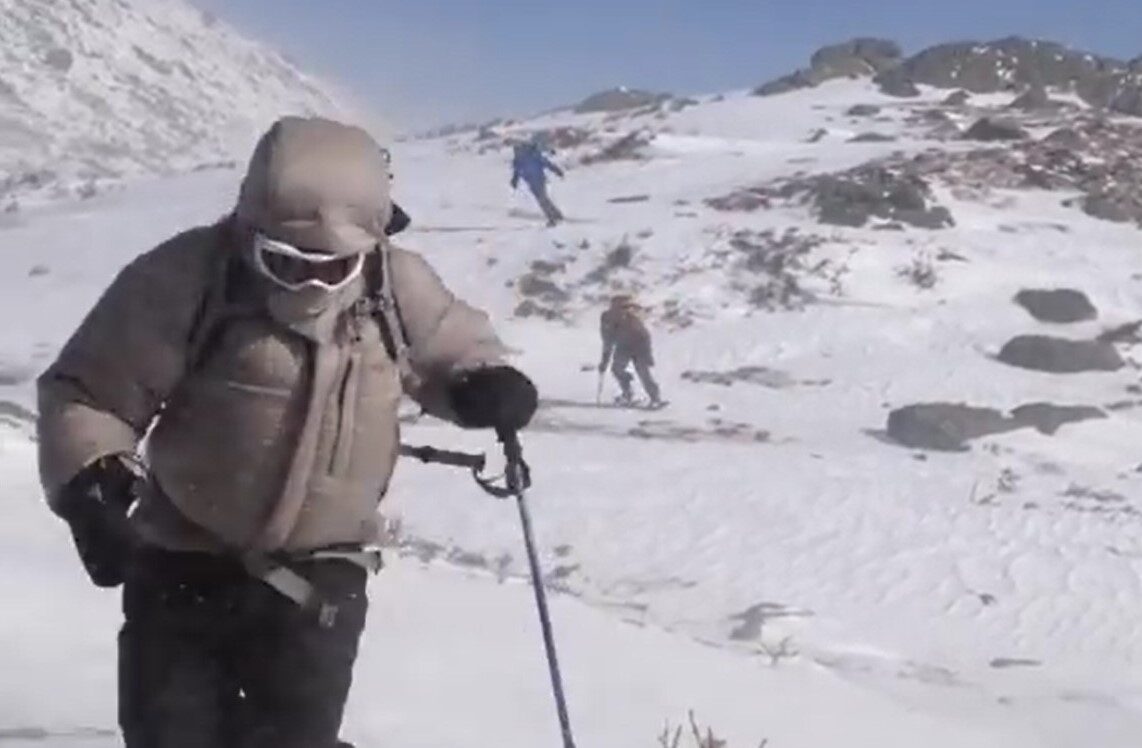By Dan Mathers
New Hampshire’s Presidential Range is known for its often extreme, dangerous winter conditions. But on President’s Day Weekend 2015, the region was enduring some of the coldest, windiest conditions it had seen in years.
On Sunday, February 15, the forecast called for wind gusts of up to 125 miles per hour and wind chills as low as -75 degrees Fahrenheit.
That evening, a hiker activated a personal locator beacon among those mountains.
Soon after, rescuers suited up and ventured into the ferocious winds, deep snow, and dangerously cold temperatures.
What followed was a sobering reminder of the power of the mountains, and a memorable example of what rescuers are willing to endure to try to save people.
An Experienced Hiker
Kate Matrosova was a 32-year-old Wall Street trader and climber from New York City known for being an intense, driven overachiever who loved the outdoors and challenges.
According to a thoroughly-researched Bloomberg article published months after the incident, Matrosova spoke three languages and built a stellar career in finance and banking largely on her talent for analyzing risk. She was an experienced mountain climber who aspired to be the first woman to climb Denali in winter.
Besides being a climber, she was also a judo practitioner who regularly destroyed male opponents and was on the brink of achieving a black belt. And she was known for being willing to pass out rather than tap when she’d had enough.
On Sunday, February 15, 2015, Matrosova’s husband reportedly dropped her off at a trailhead in the Presidentials at 5 a.m. She planned to hike the summit of Mount Madison and continue through Mount Adams, Mount Jefferson, and Mount Washington.

The forecast for that Sunday called for a high of -20 degrees Fahrenheit with shifting winds from the north starting at 45 to 60 miles per hour and rising midmorning to 80 to 100 miles per hour, with gusts of up to 125 miles per hour. Wind chills were expected to be as low as -75 degrees Fahrenheit.
While the forecast was ominous, Matrosova was training for Everest. She reportedly also thought it was fitting to do the Presidential Traverse on President’s Day Weekend as a way of celebrating her impending American citizenship.
She activated her personal locator beacon that evening.
A Dangerous Search
Rescue crews quickly assembled and ventured into the mountains to search for Matrosova. They hiked roughly three miles through the winds, cold, and snow to a location north of Mount Madison. But they were forced to turn around due to poor visibility, 80-mile-per-hour winds and temperatures of -20 degrees.
They regrouped early Monday morning, February 16, to resume their search. Mike Cherim, a member of Androscoggin Valley Search and Rescue’s Above Treeline Winter Team at the time, was one of them. He spoke to Northeast Explorer shortly after the incident.
Cherim said they still had hopes for a rescue. IF she had a double-walled tent and IF she had an extremely warm sleeping bag and IF she did everything right, then maybe, just maybe. But chances were slim.
“The conditions were barely survivable even under the best circumstances,” said Cherim. “It was just brutal conditions.”
The conditions rescuers faced that Monday morning weren’t much better than what they endured the night before. Cherim said while that morning was sunny and beautiful, temperatures were dangerously cold, and strong wind gusts of up to 108 miles per hour forced rescuers to crawl at times, and at other times it knocked them around the mountain.
“We were tossed around pretty good,” he said. (See the video below of strong winds blowing rescuers around during the search on Mount Adams.)
.
Rescuers discovered Matrosova’s body later that day on Mount Adams near Star Lake. Officials said it appeared she died of exposure to extreme temperatures.
We’ll likely never know exactly what happened to Matrosova. Some reports speculated she may have had a fall. A Boston Globe article shortly after the incident suggested strong winds may have held her high up on Mount Adams and blown her off the trail.
While tragic, Cherim said he hoped the incident served as a reminder to hikers that no matter how much experience one has, you should never be out alone in those conditions. He said he believed Matrosova did everything right — except for being out there.
Cherim, who also worked as a mountain guide, said he had been out guiding in the mountains and had made the decision to turn back on several occasions when things didn’t feel right.
“One twisted ankle and we’re all screwed,” he said.
But, outside of being out there, Cherim said Matrosova seemed to have done everything right.
“She probably did everything just about the way that we would have,” said Cherim. “She acted smart. She acted with courage and conviction.”
While they are asked to go out in dangerous conditions, one might think rescuers like Cherim would feel resentment toward Matrosova for going out in the first place. But Cherim said that was not the case.
While anything could happen at any time, he said on rescue missions he is with about 10 other skilled rescuers. Also, he said, being out there in those circumstances is part of what he signed up for.
“We have a job to do,” said Cherim. “Somebody has to do it.”


